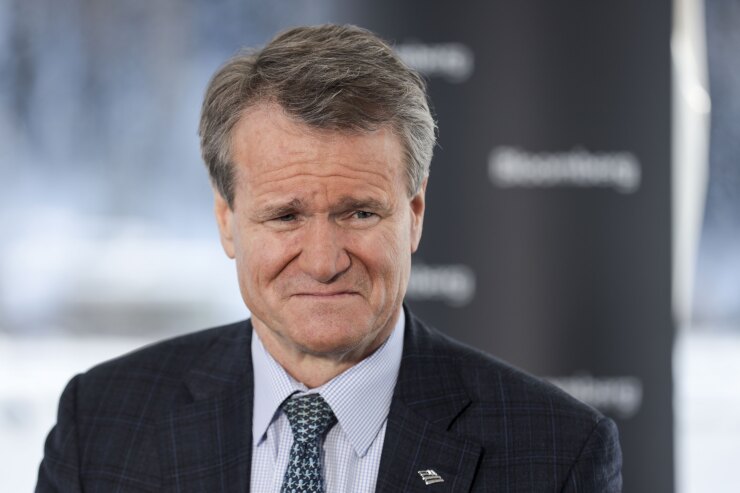Banks of all sizes need to stick together to ward off threats from "unregulated" fintechs and other nonbanks, Bank of America Chairman and CEO Brian Moynihan said Tuesday.
While many small institutions see the largest banks as their top competitive threat, Moynihan insisted that should not be the case.
"There’s been a lot of talk about the differences between big and small banks, but in reality there is no division in our industry,” he said. “The division is between those that are inside the [regulatory] tent and those that are outside.”

Noting that fintechs have not been through an economic downturn, he said it is up to banks to create the best products and services and work together to make the payments system even faster and more secure so that consumers have no reason to go outside the banking system.
“The more that consumers do with our regulated brethren, the better we will be able to live up to our purpose, which is to serve [consumers’] needs,” he said.
Moynihan's comments came during a wide-ranging speech and question-and-answer session at the Consumer Bankers Association's annual conference in National Harbor, Md.
Moynihan's message of intra-industry cooperation extended to the recent regulatory relief bill enacted by Congress last year. Though that only helped institutions with less than $250 billion in assets, Moynihan said it was perfectly "rational" for such institutions to be freed from resolution planning and stress testing because they aren't as complex as the largest institutions.
He also said he was not surprised that BB&T and SunTrust agreed to merge to join the ranks of the systemically important banks. Though the merged entity will obviously be subject to more regulatory scrutiny than BB&T and SunTrust face as stand-alone companies, it will be more efficient.
“We are operating at an efficiency that is as good as it’s ever been, and that shows that scale helps,” Moynihan said.
Moynihan said he would particularly like to see more banks participating in Zelle and the Real Time Payments Network, two faster-payments systems developed by large banks.
Many small banks have long worried that signing up for The Clearing House’s real-time system will leave them at the mercy of larger banks, which will have the power to set prices. Last week The Clearing House
Moynihan didn’t address their reluctance to be part of the RTP, but on Zelle he said that the big banks that created it have pledged to operate Zelle “as a utility for the benefit of the whole industry.” Roughly 175 banks and credit unions are now part of the Zelle network, he said.
Moynihan defended Bank of America's decision to exit slower-growing markets in recent years and build branches in faster-growing urban areas.
Coming out of the financial crisis, BofA was under intense pressure to cut costs and believed that it couldn’t invest in some markets in ways it would have liked, he said. Over a period of years, it sold roughly 350 branches to smaller banks that “could use them to become stronger and better market participants.”
He pointed out that only two of those branches have been closed. He added that 30% of BofA’s branches are in low- and moderate-income communities.
On the bank’s initiative to add roughly 400 branches in new markets, including Pittsburgh, Denver, Indianapolis and Cincinnati, Moynihan said that it already has mortgage, credit card and commercial customers in those markets and needs branches to strengthen those relationships.
In commercial banking, in particular, “without branches, you can’t be effective,” he said.
Just before Moynihan took the stage Tuesday, BofA announced that it would commit $5 billion over the next five years to help low- and moderate-income consumers buy homes.
In the Q&A, Moynihan said that for many households, the biggest impediment to buying a home is coming up with money for a down payment. The new program will offer fixed-rate loans to qualified homebuyers with down payments as low as 3%.
“This, frankly, is for people whose parents may not be able to help them” buy homes, said Moynihan, adding that the program could help roughly 20,000 homebuyers. “It’s a responsible response to keep homeownership moving in the right direction.”





